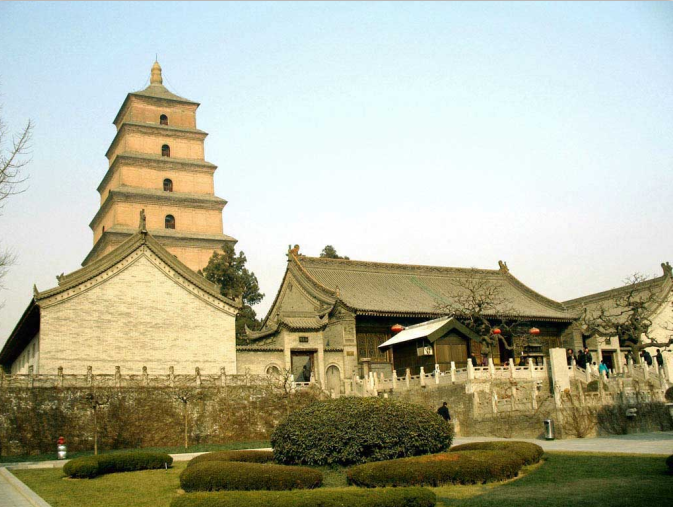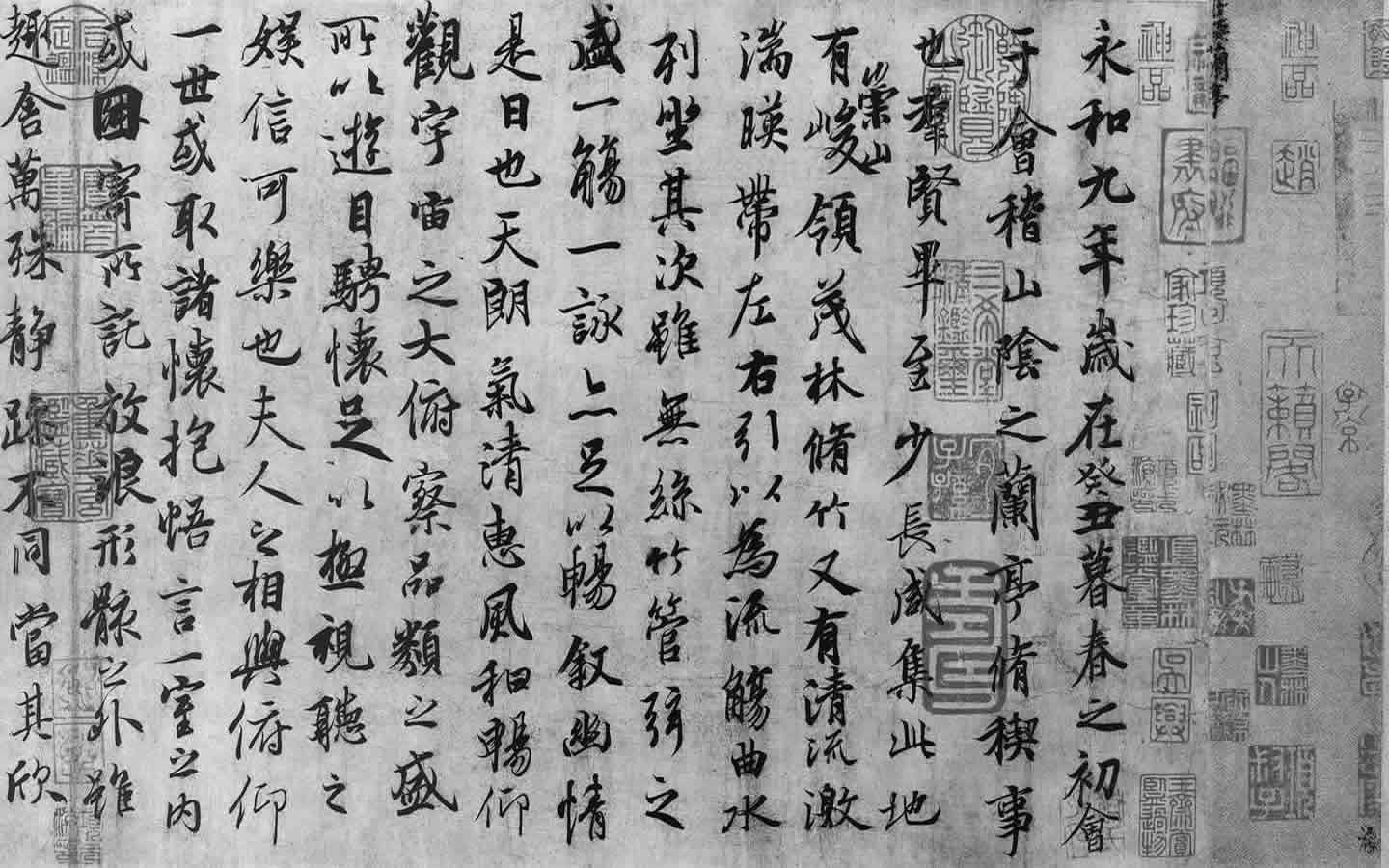Standing in the Da ci'en Temple of a southern suburb of Xi'an, the Big Wild Goose Pagoda is one of the most famous Chinese ancient structures and has been viewed as the landmark of Xi'an.
Originally built in 652 AD during the reign of Emperor Gaozong of Tang Dynasty (618-907 AD), it functioned to collect Buddhist materials that were taken from India by the hierarch Xuanzang. Xuanzang started off from Chang'an (the ancient Xian), along the Silk Road and through deserts, finally arriving in India, the cradle of Buddhism. During 17 years of traversing 100 countries, he obtained Buddha figures, 657 kinds of sutras, and several Buddha relics. Having got permission from Emperor Gaozong (628-683), Xuanzang, as the first abbot of Da Ci'en Temple, supervised the building of a pagoda inside it. With the support of royalty, he asked 50 hierarchs into the temple to translate Sanskrit sutras into Chinese, totaling 1,335 volumes, which heralded a new era in the history of translation. Based on the journey to India, he also wrote a book entitled "Pilgrimage to the West", which provides plenty of valuable materials for studying the history and society of India at that time. The pagoda was thus named because the architectural style was imported from the wild goose pagoda of India. To distinguish the smaller pagoda of the same architecture built later in the Jianfu Temple of Chang'an (the ancient name of Xi'an), people called it the Big Wild Goose Pagoda.


